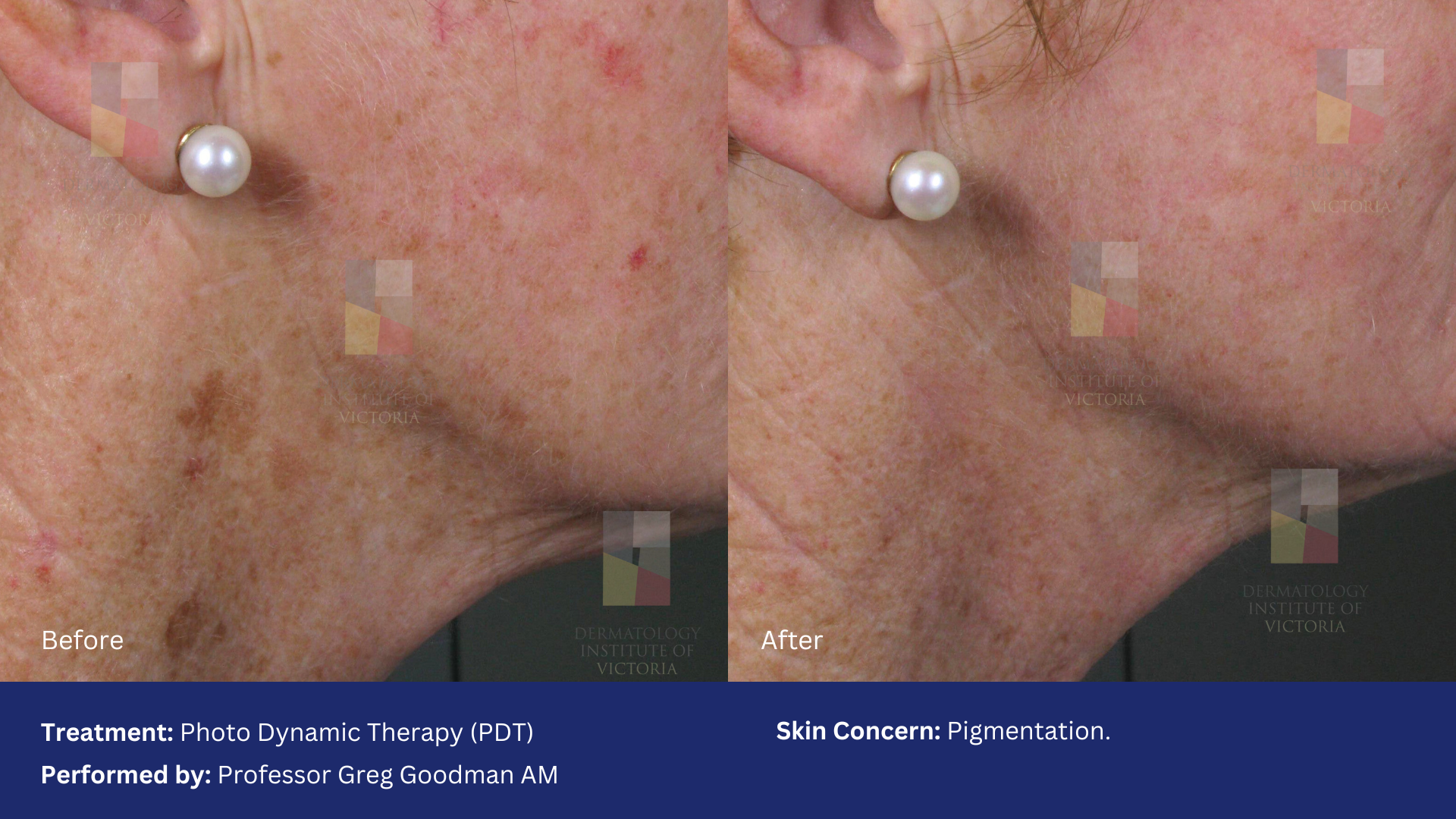Photodynamic Therapy (PDT)
What is Photodynamic Therapy?
Photodynamic Therapy (PDT) is used to treat superficial skin cancers, sun-damaged skin, precancerous lesions, acne and other dermatological concerns. PDT is a safe, precise, and well-tolerated procedure that promotes skin renewal, offering both medical and cosmetic benefits. If you're looking for an effective treatment for sun damage, skin cancer prevention, or overall skin health improvement, Photodynamic Therapy could be the ideal solution.
How does Photodynamic Therapy work?
PDT involves the application of a light-sensitive solution, known as a photosensitiser to the targeted area for an appropriate time. This solution is absorbed by abnormal or damaged skin cells. After an appropriate absorption period, the area is exposed to a specific wavelength of light, which activates the photosensitiser. This activation produces a reactive form of oxygen that effectively destroys precancerous and cancerous cells while preserving the surrounding healthy tissue.
The light source—whether pure-coloured light (blue, yellow, green, or red), laser, or even natural daylight—penetrates the skin safely and precisely, targeting only the affected cells that have been stained by the photosensitiser agent. PDT is a highly effective treatment with a short procedure time, minimal downtime, and excellent cosmetic outcomes.
How many treatment sessions are required?
Usually 1-2 treatments will be required over the course of a few weeks or months.
*All results shown on our website have been achieved by our team members. Please note that results are individual and may vary. All patient photos have been used with given consent.
What will you experience during the procedure?
During the Photodynamic Therapy (PDT) procedure, a topical photosensitizing agent is applied to the targeted area. This agent needs time to be absorbed by the cells, so patients typically wait for a specified period to allow it to penetrate the skin. Once the photosensitizer has been adequately absorbed, the treated area is exposed to a specific wavelength of light—either pure-colored light, laser, or natural daylight—depending on the lesions being treated and the light source used.
During the light exposure, patients may experience a mild warming or tingling sensation in the treated area. This is generally well-tolerated and subsides after the treatment. Following the procedure, patients are advised to remain in the clinic for a minimum of 15 minutes and apply ice to the treated area to help soothe the skin.
What are the post-procedure expectations and care?
Swelling is common, particularly on areas such as the upper cheeks, forehead, and nose, but it typically subsides within a few days. A slight stinging or burning sensation may also be felt during the healing process. If brown spots are treated, the area may temporarily lose colour, with the skin returning to normal within two to four weeks. Additionally, dryness and flakiness may occur as the treated area heals and new skin forms. These sensations are generally temporary and part of the natural healing process.




